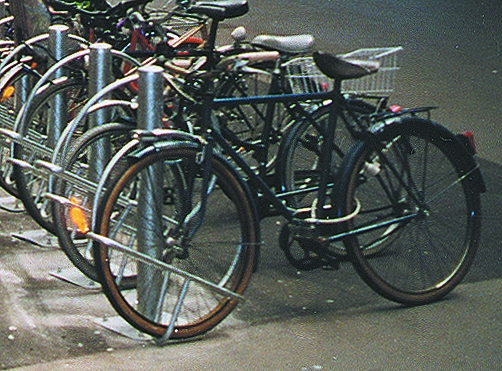Loi Laure: Understand it in a few minutes!! What are the challenges and consequences for the building sector? Which new buildings are affected? What kind of car park bicycles installed: rack, support bike ou bike stand? What minimum size of bike parking? ...
I. The LAURE law summarized in 3 sentences!!
Table of contents
ToggleThe Laure Law aims to generalize bicycle parking in all new buildings. It does not apply to rehabilitated buildings. First created in 2011, the LAURE law was enriched in 2017 to offer quality bicycle parking, allowing 2-point securing (wheel + frame).
As the "devil is in the details", I suggest you see all the parameters of the law, such as the calculation of the minimum surface area of the bicycle parking lot, in the part IV !
II. Loi Laure 2011: New residential buildings first
Since the decree of July 25, 2011, the LAURE law requires that any construction of new buildings à residential use must have a space reserved for secure bicycle parking.
III. New Law Laure 2017: Extension of the buildings concerned and exclusion of the racks!
A new decree, applicable from January 2017, has decided to broaden the scope of application. Thus, “In order to promote cycling, any new building, industrial, commercial (including cinema complexes) or hosting a public service, including parking spaces for employees or customers, also offers infrastructure allowing the 2-point secure parking for bicycles".
The 2-point securing, i.e. the possibility of attaching 1 wheel + the frame, effectively excludes the "racks" because the latter do not allow you to attach only the wheel. This statement finally allows us to propose a bike parking quality and safe!!
This obligation applies to all requests for permission deposited from January 2017.
IV. The Laure Law in detail…
Decree No. 2016-968 of July 13, 2016 relates to facilities dedicated to charging electric or plug-in hybrid vehicles and infrastructure that allows the parking of bicycles during the construction of new buildings. Included in articles L111-5-2 and L111-5-3 of the construction and housing code, it imposes the obligation to create bicycle parking spaces in workplaces and public places. The goal ? Promote cycling. This measure continues the work undertaken by LAURA law and its decree no. 2011-873 of July 25, 2011 which have already made it compulsory to set up secure infrastructures for parking bicycles during the construction of new residential buildings.
This is how the new buildings for industrial, commercial use, hosting a public service or even housing and which have individual parking spaces, intended for agents, employees or users of the public service are concerned by this measure.
The place must thus be placed either on the ground floor of the building, or in the first basement. It can also be located outside the structure. It must then be closed and covered. Only intended for bicycles, the space must include bicycle garages to allow the two-wheelers to be properly attached. It must be supervised or equipped with a lock.
The capacity of the bike park must be adapted to attendance of the building :
- If it is offices, the bicycle parking must have a surface corresponding to 1.5% of that of the floor. For example, if the floor area is 10m², the garage bicycles must have an area of at least 150m².
- For a building for industrial or tertiary use, or hosting a public service, the calculation of the number of bicycle spaces is made in relation to 15% of all employees present at the same time in the building, on declaration of the building owner. For example, if this type of structure accommodates 100 employees, the bicycle parking lot must have 15 spaces.
- In the case of commercial use, it is considered that there is a rotation. The number of bicycle spaces must then represent 10% of the number of customers and employees welcomed at the same time, upon declaration by the client.
Find the law in detail with the items L111-5-2 et L111-5-3 of the construction and housing code.
Discover bike racks that meet the obligations of the Laure law.


